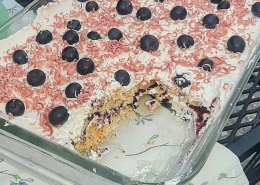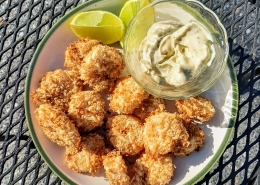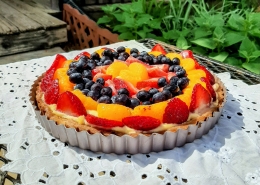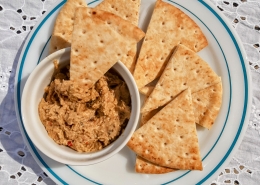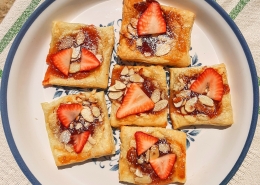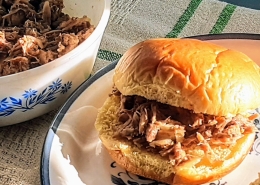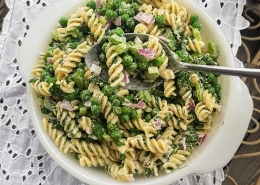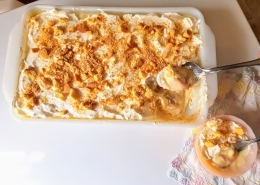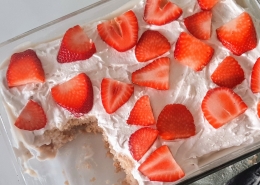Bakewell Tart
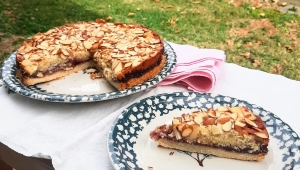
Have you been searching for a Thanksgiving-worthy dessert that strays away from the classics? Look no further than this recipe for the British staple, the Bakewell tart. This tart is filled with frangipane, which is a delightful almond confection, plus a layer of sweet-tart raspberry jam. Topped with sliced almonds and wrapped in a sweet pastry crust, it’s sure to keep your guests saving room for dessert this holiday season.
Ingredients for the crust:
1 ½ cups all -purpose flour
¼ cup granulated sugar
8 T butter, cold
1 egg yolk (save the white for the filling)
2 T cold water (as needed)
Ingredients for the filling:
8 T butter, softened
½ cups granulated sugar
¼ tsp salt
1 cup almond flour
¼ cup all-purpose flour
1 egg white
1 egg (whole)
1 cup raspberry jam
1 T vanilla extract
1 cup sliced almonds
Instructions:
Line a 10-inch tart pan with a removable bottom using butter. Set aside.
To make the tart crust, add your flour and sugar to a large mixing bowl. Whisk together to combine.
Cut your cold butter into small cubes and add them to the bowl. Mix them together using your hands, or a fork if your hands are too warm. Work it into the flour until there are no lumps and the dough becomes a sandy mixture.
Add your egg yolk and work it into the dough until incorporated.
If your dough is not coming together after working in the egg yolk, add a tablespoon of cold water. Once most pieces of the dough are lumping together, it’s ready.
Press the dough into your prepared tart pan in an even layer. Put it in the freezer and set a timer for 30 minutes.
Preheat your oven to 400 F.
Once your crust is done freezing, bake it for 15 minutes.
When your crust has baked, remove it from the oven and spoon an even layer of your raspberry jam on top of it.
Reduce your oven temperature to 350 F.
Begin making the frangipane filling by adding your almond flour, sugar, salt and flour to a large mixing bowl. Whisk the ingredients together to combine.
Cut your softened butter into chunks and add it to your mixing bowl. Mix the butter until well combined on low speed with a hand mixer.
Add your egg white, whole egg, and vanilla extract. Mix on low speed until everything is incorporated and smooth.
Spoon your frangipane onto your tart in an even layer. Be careful not to mess up your raspberry jam layer as you do so.
Cover the top of the frangipane layer with your sliced almonds.
Bake your tart for 35-40 minutes. You’ll know it’s ready when the edges are brown, the frangipane is golden, and a fork inserted in the center comes out clean.
Allow it to cool and remove it from the tart pan. Serve and enjoy!

 Embrace the cozy embrace of autumn with Hot Mulled Cider! Crafted with the magic of
Embrace the cozy embrace of autumn with Hot Mulled Cider! Crafted with the magic of 

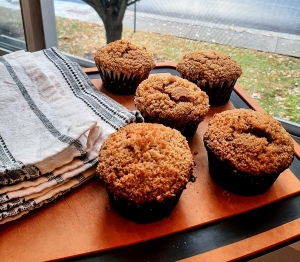
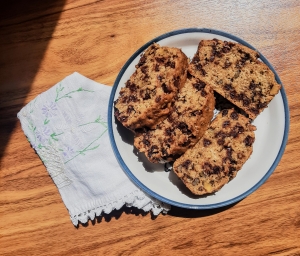 If your backyard garden is filled to the brim with zucchini, baking some fresh zucchini bread is a classic and delicious solution to handle the surplus. Perfect for sharing with friends and neighbors, it makes a wonderful treat. Doll it up with some walnuts and chocolate chips, make it plain, or customize the fillings to your liking. Serve it up for breakfast, as an afternoon snack, or just because.
If your backyard garden is filled to the brim with zucchini, baking some fresh zucchini bread is a classic and delicious solution to handle the surplus. Perfect for sharing with friends and neighbors, it makes a wonderful treat. Doll it up with some walnuts and chocolate chips, make it plain, or customize the fillings to your liking. Serve it up for breakfast, as an afternoon snack, or just because. 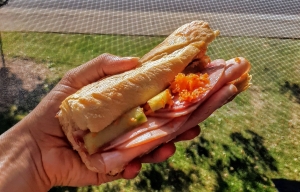 Sometimes, the typical sandwich options feel so drab, and you’re craving something different. Why not spice things up with this recipe? Inspired by the classic banh mi, we’ve made this sandwich packed-lunch friendly without sacrificing any taste or freshness. You can put it together for your lunch first thing in the morning before work or school, or even take it for a picnic. Make it spicy if you’d like, or leave it plain savory. Either way, you’re sure to enjoy this delicious and easy sandwich.
Sometimes, the typical sandwich options feel so drab, and you’re craving something different. Why not spice things up with this recipe? Inspired by the classic banh mi, we’ve made this sandwich packed-lunch friendly without sacrificing any taste or freshness. You can put it together for your lunch first thing in the morning before work or school, or even take it for a picnic. Make it spicy if you’d like, or leave it plain savory. Either way, you’re sure to enjoy this delicious and easy sandwich. 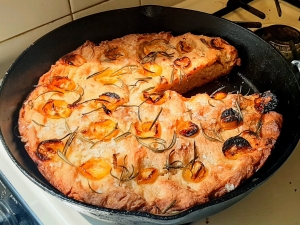

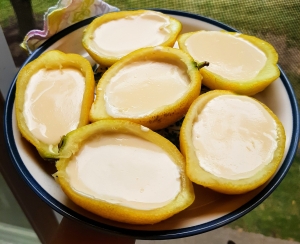 Nobody enjoys a hot kitchen during the peak of summer heat, but this recipe won’t have you making any sacrifices for a scrumptious treat. Similar to a pudding or custard, possets require
Nobody enjoys a hot kitchen during the peak of summer heat, but this recipe won’t have you making any sacrifices for a scrumptious treat. Similar to a pudding or custard, possets require 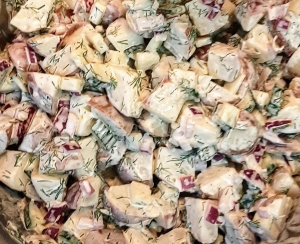 This Greek-inspired potato salad has captured our taste buds this summer and we’re so excited to share it with you. This dish is perfect for any picnic, cookout, or lawn party and will help you beat the heat without being the least bit bland. Creamy and tangy, it has everything you want in a potato salad and much, much more.
This Greek-inspired potato salad has captured our taste buds this summer and we’re so excited to share it with you. This dish is perfect for any picnic, cookout, or lawn party and will help you beat the heat without being the least bit bland. Creamy and tangy, it has everything you want in a potato salad and much, much more. 